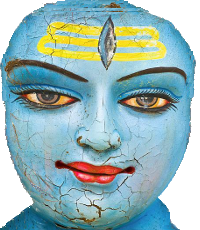Indian mathematics
The number system which the world uses today originated in India in the first centuries CE. The numbers are usually referred to as “Arabic” since the Europeans obtained them from the Arabs, but in the Middle East they are known as “Indian” since the Arabs obtained them from India. Mathematics emerged as a separate field of study already in Vedic times but it was in the Gupta period that the greatest advances were made. Indians learned from Greek mathematicians but they made seminal contributions of their own. They were the first to make use of decimals and the number zero. They used negative numbers too and they beat Pythagoras to his famous theorem. Indian mathematicians calculated the value of π, pi, with a very high decree of precision, and determined the circumference of the earth and the timing of lunar and solar eclipses. In the 15th century CE, Kerala, in the very south, was home to a school of mathematics which developed trigonometric functions.
In India, mathematical knowledge always developed in conjunction with its practical application. Already the Harappa civilization, some 2,500 years BCE, used geometry in order to calculate the size of fields. In Vedic culture maths was used to determine the size of altars and for deciding when to engage in various religious rituals. Likewise, notion of zero and infinity both have their origin in religious speculations. The world as we know it contains no nothing; everything we see around us is something. Yet in Buddhist philosophy, nothingness is a key concept and the goal of mediation is to empty one’s mind. Nothingness, to a Buddhist, is real. Meanwhile, the Jains were fascinated by very large numbers. They told stories of gods who appeared millions of times with millions of years apart. The better you can understand the infinite, they argued, the better you can understand the divine.
The history of mathematics is a great example of a civilizational exchange. The Indians learned math from the Greeks, taught the Arab world, which in turn taught the Europeans. At each stage, the knowledge was transformed and improved on. To this day only some ten percent of all the manuscripts on Sanskrit science have been published and much remains to be properly studied. There may be many surprising discoveries to be made.
Read
External links
- “15 Famous Indian Mathematicians and Their Contributions”
- “Mathematics in Ancient and Medieval India”
- “The Bakhshali manuscript”
- “The Kerala School of Mathematics”
- American Mathematics Society, “All for Naught”
- BBC, “Maths Expressed as Poetry”
- BBC, “Nirvana by Numbers”
- George Gheverghese Joseph, History of Indian mathematics
- History of India, “Science and Mathematics in India”
- Ian G. Pearce, “Indian Mathematics: Redressing the Balance”
- Vedic Maths India

